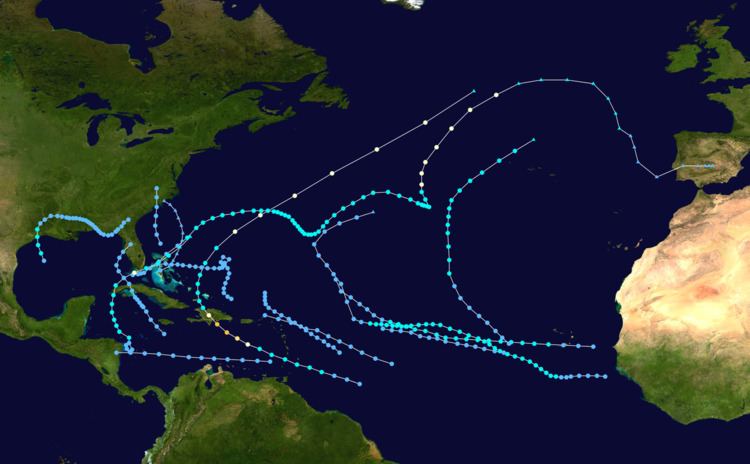 | ||
The 1987 Atlantic hurricane season was a below-average season, having fewer named storms than in a normal year, that resulted in little impact throughout the Atlantic basin; the United States recorded no hurricane-related fatalities, making the 1987 season the fourth to do so since 1976. The season officially began on June 1, 1987 and ended on November 30; however, a pre-season storm, Tropical Depression One, led to the season's starting on May 25. Storm activity ended several weeks early; the final storm of the season, Tropical Depression Fourteen, dissipated on November 4. This timeline includes information that was not operationally released, meaning that information from post-storm reviews by the National Hurricane Center, such as a storm that was not operationally warned upon, has been included. This timeline documents tropical cyclone formations, strengthening, weakening, landfalls, extratropical transitions, as well as dissipations during the season.
Contents
The season had fourteen tropical depressions, of which seven intensified into tropical storms—an average season has ten tropical storms—three became hurricanes and one, Emily, became a major hurricane. The inactivity throughout the basin was linked to persistent, strong vertical wind shear; most of the season's storms were unable to intensify due to the shear, resulting in a low number of named storms and hurricanes. The two most notable storms of the season were Hurricanes Arlene and Emily. Hurricane Arlene spent roughly 14.5 days as a tropical storm before intensifying into a hurricane, the longest span between these intensities on record. Hurricane Emily was the only major hurricane of the season; its wind speeds peaked at 125 mph (205 km/h) before impacting the Dominican Republic. Three fatalities occurred in the Dominican Republic because of the storm and damages were estimated up to $80.3 million (1987 USD).
